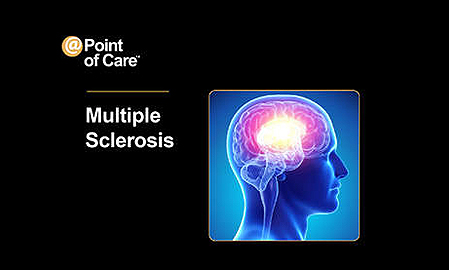@Point of Care has integrated IBM’s much-touted Watson cognitive technology into its real-time clinical-decision platform, company CEO and founder Bob Stern announced this week. The @Point of Care platform, designed to streamline doctor/patient interaction, will now allow clinicians to access more information faster, employing the same language they’d use in conversations with a trusted peer.
Here’s how it works: Let’s say a patient asks his doctor about treatment scenarios involving any one of several conditions—MS, rheumatoid arthritis, Hep-C, Parkinson’s and COPD among them. The doctor can simply re-pose the question to @Point of Care, using natural language, and receive either an answer or scads of relevant information within seconds.
“Say the question is, ‘Which neurotransmitters and growth factors are potential predictors of cognitive impairment in MS?’ What [@Point of Care] can now do is look at the entirety of the sentence structure and pull up the most reasonable answer,” explains Sandeep Pulim, MD, @Point of Care’s chief medical information officer. “This isn’t just typical search. Doctors don’t have to think, ‘What am I searching for?’ All they have to do is ask the question.” If clinicians don’t find the answer to their immediate liking, they can tap a “learn more” icon at the bottom of the screen.
In addition, the more Watson is used, the smarter it becomes. “Think of it as a baby who needs to be educated and taught,” Pulim says. “The more questions you ask it, the more Watson learns. It figures out what the key articles and journal abstracts are. It can interpret.”
The @Point of Care integration marks an expansion for the use of Watson technology by physicians. Since 2012, the technology has been taught, so to speak, by cancer doctors at New York’s Memorial Sloan Kettering Cancer Center, who have been familiarizing it with information from journals and health records.
Up next for @Point of Care: adding tools to its patient and clinician dashboards. “Pharma companies are approaching us to distribute key tools through the platform and maybe add them directly to the dashboard,” Pulim reports. “Maybe it would be a pain-assessment tool. Maybe it would be a treatment algorithm for diabetes. There are lots of cool things that are coming.”








